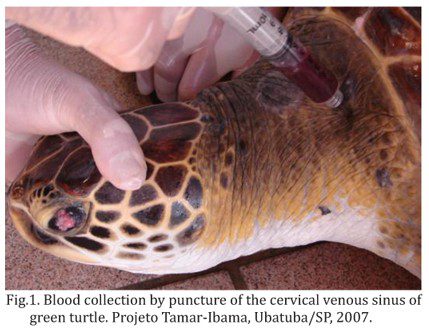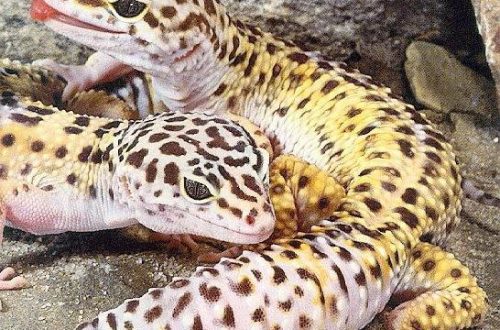
Falanqaynta biochemical ee dhiigga qoolleyda

In many Moscow veterinary laboratories at clinics, a biochemical blood test is done. The analysis is done according to five indicators: urea, total protein, phosphorus, calcium, uric acid (to determine renal failure), or by: total protein, glucose, uric acid, urea nitrogen, creatinine, transaminases (AST, ALT), alkaline phosphatase, creatine kinase, electrolytes (calcium, phosphorus, sodium, potassium and chlorine).
Normal indicators for a turtle are:
| dhimaya | Average for turtles | unug | |
| Alanine aminotransferase | OTHER | si 20 | ed/l |
| Nitrogen -ka Urea | WANAAGSAN | 200-1000 20-100 | mg / l mg / dL |
| Aspartate aminotransferase | AST | 50 - 130 | ed/l |
| Glucose | 36-100 2-5,5 | mg / dL mmol / l | |
| Hematocrit | CVP | 0,24-0,35 20-35 | l/l % |
| Gamma-glutamyltransferase | GGT | <= 10 | ed/l |
| potassium | 2 - 8 | mmol / l | |
| Calcium | 3.29 (2.4-4.86) 8 – 15 | mmol / l mg / dL | |
| Creatinine | <= 26,5 <1 | μmol / l mg / dL | |
| Creatine kinase | 490 | ed/l | |
| Lactodehydrogenase | LDT | si 1000 | ed/l |
| Acid aashito | 71 (47,5-231) 2 – 10 | μmol / l mg / dL | |
| HOL | 0,35-1,62 | mmol / l | |
| sodium | 120-170 | mmol / l | |
| Wadarta borotiinka | 30 (25-46) 3 – 8 | g / l g/dL | |
| Triglycerides | 1-1.8 | mmol / l | |
| Fosfooraska | 0.83 (0.41-1.25) 1 – 5 | mmol / l mg / dL | |
| Chlorine | 100 - 150 | mmol / l | |
| Fosfatase alkaline | ed/l | 70-120 |
Qadar yar xawaaraha may be due to poor nutrition, or be the result of impaired kidney function or impaired intestinal absorption (in the presence of parasites). Lack of Glucose typical for malnourished turtles, with an excess of protein in the feed, with severe hepatopathy, endocrinopathies and septicemia. It manifests itself as lethargy, slight tremor, sagging head, dilated pupil.
Baxayn uric acid an increase to 150 mg / l indicates a pathological process: renal failure, gout, nephrocalcinosis (excess calcium and D3), bacteremia, septicemia, nephritis. This is not a reliable indicator of kidney failure (2/3 of the kidney tissue will be affected), but it does indicate gout quite clearly. A concentration of 200 mg/l is lethal. Nitrogen -ka Urea (BUN) is removed by glomerular filtration, so an increase in the level of urea may indicate impaired renal function (glomerular apparatus) and non-renal azotemia. Creatinine is normally very low and may increase with dehydration and impaired renal function. The source of the enzyme creatinine kinase is skeletal muscle. Its increase together with AST and ALT indicates a pathological process on the part of skeletal muscles. Calcium. Hypocalcemia develops due to a lack of calcium in the diet, an excess of phosphates, and a lack of vitamin D.3, as well as alkalosis and hypoalbuminemia. In the initial stages of the disease, the lack of calcium is compensated by bone tissue, while a normal level of calcium in the blood can be maintained. Elevated calcium levels (too much calcium and vitamin D3, as well as increased function of the parathyroid glands and osteolysis.
Levels above 200 mg/l are dangerous and lead to nephrocalcinosis, renal failure and false gout. Sharp drop sodium in the blood is observed with severe diarrhea. Level increase potassium usually associated with necrosis or severe acidosis. Level increase koloriin can be associated with both kidney failure and dehydration (tortoise weight is reduced). An increased level of phosphorus in the blood can be caused by an excess of phosphorus in the feed, hypervitaminosis D, and kidney failure. Normally, the ratio of calcium and phosphorus in the blood should be 4:1 – 6:1, and in the feed – 1,5:1 – 2:1. Young turtles have normally elevated blood phosphate levels.
To pass the analysis, the attending veterinarian must take blood from a vein (usually a supratail vein) from a turtle at any time of the day, preferably on an empty stomach in a volume of at least 0,5-2 ml in a test tube with EDTA.
When examining the blood of turtles, it is worth considering the reference fluctuations due to sex, age and season of the year. For example, the highest levels of calcium can be observed in healthy turtles between April and March, and by October the values decrease significantly, adult females may have higher values than males. And the norm of uric acid in the blood is conditionally considered to be a concentration not exceeding 594 µmol / l. Unfortunately, reference blood values in reference books are not as strict as in the case of cats or dogs, due to too little research done to compile references for reptiles.
Minor deviations from the norm, with the general good health of the animal, may be the norm for this animal. It is best to rely on previously obtained results of blood tests taken in the same year, specifically from this turtle.
Laboratories in which we did tests:
- Veterinary laboratory “Chance”
- Vet Clinic “White Fang”
- Vet clinic “Bambi”
- Vet clinic “Center”
Qodobbada kale ee Caafimaadka Turtle
© 2005 - 2022 Turtles.ru





